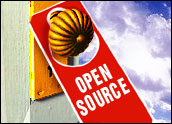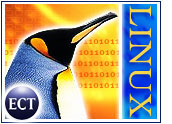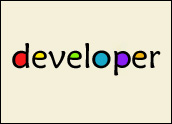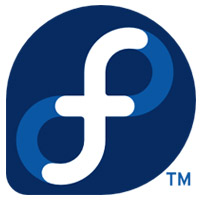
Firebird, an open-source relational database, emerged from the InterBase source code, release by Inprise Corporation — now known as Borland — in 2000. Firebird, which runs on Linux, Windows and a variety of Unix platforms, offers concurrency, high performance and powerful language support for stored procedures and triggers. It has been used in production systems under a variety of names since 1981.
Firebird is a commercially independent project of C and C++ programmers, technical advisors and supporters developing and enhancing a multiplatform database-management system based on the source code released under the InterBase Public License. In an interview with LinuxInsider, Helen Borrie, project team administrator and author of a forthcoming book on Firebird, provided an inside look at the project and where Firebird is headed.
LinuxInsider: Can you provide an overview of the goals of the Firebird project?
Helen Borrie: It’s a fork of a mature commercial database called InterBase. InterBase is an enterprise-level database — Firebird is the same, but better. You’ll find Firebird behind a number of Web sites, storing records for telecom companies and managing data for point-of-sales systems — just about anywhere you might find Oracle or [Microsoft] SQL Server.
The Firebird Foundation is a nonprofit organization that centralizes a number of the administrative aspects concerning the Firebird project and the software community. It raises funds and sponsors people for specific jobs and organizing releases. It has no commercial activities.
The project goal is to replace Oracle and SQL Server in commercial applications. Most of our users are building new systems that compete with systems built on commercial databases. With Firebird, they get the same features and can sell their systems for much less than the competition. The software that runs ordinary businesses today is too expensive and too hard to use. Firebird is helping to change that.
LinuxInsider: How is the Firebird project supported — all volunteer, financial contributions, investors?
Borrie: Primarily volunteer. The Firebird Foundation provides grants to some contributors and some companies IBPhoenix and Broadview Software allow their employees to work on Firebird part-time. The Foundation gets its funds from memberships and donations.
LinuxInsider: Do you have an idea of market penetration?
Borrie: We’re getting about 2,000 downloads a week from Source Forge, but raw downloads aren’t reliable indications of use. Our support lists are a better indicator, because they represent real usage. The main list has doubled since last year and now generates about sixty messages a day, mostly on weekdays. The weekend traffic has fallen off, suggesting that more people are using Firebird in their work rather than experimenting with it in their spare time.
Firebird has been particularly successful outside the United States. The Portuguese language support lists in Brazil have over 3,000. One of the most active Firebird news sites is in Russia, home of some of our most prolific developers. We’ve got an active user group in Japan, which is planning a conference for September.
LinuxInsider: Are there commercial support contracts available? How about free support for developers?
Borrie: Free support is available on the support lists. Most developers and many experienced users follow the lists, so the answers there are well above the average value of free advice. In addition to the general Firebird support list, there are separate lists for specific areas: Java, .Net, Delphi, PHP, ODBC, Visual Basic and so on.
Commercial support is available from a number of companies. The major English language company is IBPhoenix, whose principals include the former General Manager for InterBase at Borland and one of the original developers of InterBase. Other groups provide similar services in a number of countries — for example, Brazil, Germany, Russia, France, Spain, Italy and Japan.
LinuxInsider: What Linux distributions have been tested or certified for Firebird?
Borrie: The Firebird Foundation, IBPhoenix and Broadview Software sponsor testing for Red Hat and Fedora, Mandrake and SuSE. Members of the Debian project make Firebird available there. Any Linux with a reasonably recent gcc is a good candidate for Firebird.
LinuxInsider: Can you provide some roadmap information on the future of Firebird?
Borrie: The official road map is under construction, but we have a general working direction.
First, let me give you a bit of historical perspective. When Borland released the InterBase code, it was read-only and the build scripts did not work. A number of developers had watched the process of releasing the code and wanted to work on it.
That’s why there was a fork. The goals for Firebird 1.0 were to get the code built, working and fix a few hundred of the most egregious known bugs.
Firebird 1.5 had a slightly more aggressive goal: Convert the code from C to C++. In the process, a number of features crept in, but features were not the goal of 1.5 either. It’s only with Version 2 that we’ve achieved mastery of the code and are ready to take on major features
Today, three distinct projects are contributing to Version 2. One is the normal head branch which has new SQL features, performance enhancements and a variety of changes that allow Firebird to support much larger databases than could be imagined even four years ago when the project started.
Another is Yaffil, a former Firebird fork that we are reintegrating with the main code base. The third is Vulcan, a major restructuring of the whole code base, restoring and modernizing the original InterBase architecture that has been obscured by 20 years of tinkering.
The official roadmap will describe the order and nature of these merges. We anticipate a major release before the end of the year and another one not long after that.
LinuxInsider: How does your license differ from that of MySQL?
Borrie: Our license is essentially the Mozilla Public License v.1.1, changed only to reflect that the code is not Netscape, that the original developers were Inprise/Borland (for the code they released) and the individuals who develop new code.
Those are the only licenses we have and they specifically allow commercial products to include and ship Firebird. Nobody pays for Firebird and everyone uses it under the same license.
LinuxInsider: How do you differentiate yourselves in the database marketplace?
Borrie: Firebird has a comprehensive range of driver support — Java, JBoss, Tomcat, PHP, Python, ODBC, .Net, Borland-compatible components, ADODB — you name it, we talk to it. Add Firebird’s small footprint and minimal administration requirements and you’ve got a good solution for serious application builders.
Firebird has a small footprint. The server is less than 1.5 MB, the client about 350 KB, and it runs on nearly any machine that can boot the operating system.
LinuxInsider: How about looking at the enterprise and corporate markets?
Borrie: Major corporations like Boeing, Lockheed and Motorola were InterBase users, so we’ve got the track record. It’s very satisfying to learn of yet another big corporation or enterprise software product that has switched to Firebird, and, as the word gets out, it happens more often.
Why is this market getting so interested in evaluating an open source RDBMS as a replacement for the commercial products they have invested in? An article I read the other week reported the results of a survey of U.S. companies showing that 50 percent of them are using open-source software somewhere in their business.
That’s a giant leap in half a decade and carries a message that should interest all of us. Big Business in the richest country in the world is getting seriously real about the Emperor’s New Clothes.
LinuxInsider: Who are the key players on the Firebird team?
Borrie: In the current line-up, the core team defers to Dmitry Yemanov for arbitrating between different approaches to development. Arno Brinkman and Nickolay Samofatov are gifted designers and coders. Alex Peshkov has special responsibilities for security issues. Claudio Valderrama scrutinizes incoming code. Pavel Cisar is developing the new test beds.
Firebird 2 has multiple development streams at its current, pre-alpha phase. There is, of course, the head branch of the main code base on Source Forge.
A second is a major architectural restructuring by Jim Starkey for an IBPhoenix customer. Jim designed and wrote the original InterBase code on which Firebird is based. The customer wants Jim’s work — currently tagged “Project Vulcan” — to be open source for contribution to the broader Firebird code base.
The third is an enhanced implementation of the Firebird 1.0 Windows server known as Yaffil. Yaffil’s proprietors handed the source code over to the Firebird project last November. Its main developer, Oleg Loa, joined Firebird and supervises the integration of Yaffil enhancements with the Firebird 2 code.
The driver development projects are also key branches of the Firebird product. They include the Jaybird JDBC Type 2 and Type 4 Java drivers (the team lead is Roman Rokytsky), Firebird.Net provider and ADODB drivers (Carlos Guzman Alvarez) and the Firebird ODBC/JDBC driver (original author, Jim Starkey, team lead Vladimir Tsvigun).















































